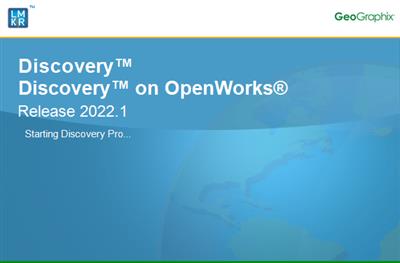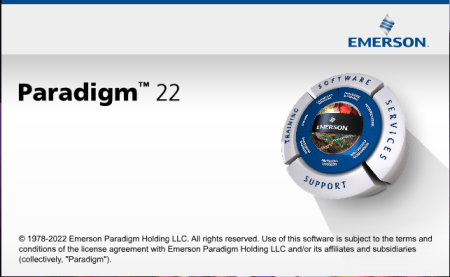
Seismic Processing Velocities - Geophysics
Posted on 07 Aug 02:45 | by huayting | 24 views

Seismic Processing Velocities - Geophysics
Published 8/2022
MP4 | Video: h264, 1280x720 | Audio: AAC, 44.1 KHz
Language: English | Size: 218.20 MB | Duration: 1h 7m
Introduction to 3D Seismic Velocities for Seismic Processing
What you'll learn
The attendee will come to more fully understand the simplicities – and complexities – of seismic velocities.
Why are velocities so critical in the seismic processing method? How are velocities used in time migration compared to depth migration?
What are tomography and full waveform inversion? How do I understand this from a big-picture view? What is anisotropy? How can 5D interpolation be part of this?
These a non-mathematical presentations, showing the basics. Concepts are shown so that the viewer will better understand how and what these velocity terms mean.
This will help 3D seismic interpreters, geologists, geophysicists and seismic processors.
How are nmo velocities picked? What are flat gathers? How can accurate or inaccurate velocities image my depth structure?
Requirements
A basic understanding of the seismic exploration method. Perhaps you've looked at a 3D seismic volume and want to understand more about how the data came to be on there.
There will be no math! Well, except for depth = velocity x time. But really, there are no other equations.
Everything is shown in simple, graphical displays. The basics are explained.
Description
This course is about seismic velocities, especially as related to seismic processing and 3D seismic exploration. Each presentation contains hand-created graphics, illustrated to explain the concepts. The presentations are separated into 9 individual presentations. The users will better understand the importance of proper seismic velocities and how doing it wrong can severely harm your interpretation. But how using the right velocities, in the right procedures, can greatly help image the subsurface as well as find horizontal layering and vertical fractures.Parts 1 & 2: Introduction to standard NMO velocities and multiples. How are velocities picked and how to avoid multiples.Parts 3-5: Fundamental differences between time migration velocities and depth migration velocities. Why depth migration is required for areas with lateral velocity variations. How migrated gathers are affected. What are velocity sags and pull-ups? How to build a traditional sub-salt velocity model.Parts 6 & 7: Tomography and Full Waveform Inversion. How they are used in depth migration to improve psdm velocity fields. How are gathers affected before and after tomo and fwi? Simple graphics explain each concept.Parts 8 & 9: Anisotropy. VTI, HTI. Anisotropy can be used to help find horizontal rock layering and vertical fracturing. How does anisotropy look on seismic data?
Overview
Section 1: Introduction
Lecture 1 Seismic Velocities - Part 1
Section 2: Seismic Velocities - Part 2 multiples
Lecture 2 Seismic Velocities - Part 2
Section 3: Seismic Velocities - Part 3: difference between time and depth velocities
Lecture 3 Seismic Velocities - Part 3: difference between time and depth velocities
Section 4: Seismic Velocities - Part 4: pstm vs psdm velocities in lateral velocity changes
Lecture 4 Seismic Velocities - Part 4: pstm vs psdm velocities
Section 5: Seismic Velocities - Part 5: how to build a sub-salt velocity model
Lecture 5 Seismic velocities - part 5
Section 6: Seismic Velocities - Part 6: tomography
Lecture 6 Seismic Velocities - Part 6: tomography
Section 7: Seismic Velocities - Part 7: full waveform inversion, FWI
Lecture 7 Seismic Velocities - Part 7: fwi
Section 8: Seismic Velocities - Part 8: anisotropy and horizontal layering
Lecture 8 Seismic Velocities - Part 8: anisotropy and horizontal layering
Section 9: Seismic Velocities - Part 9: anisotropy and vertical fractures - with 5D!
Lecture 9 Seismic Velocities - Part 9: anisotropy and vertical fractures, with 5D!
Geologists and geophysicists who work with any seismic dataset. Managers who need to understand the benefits and limitations of seismic datasets. Those who wish to learn some fundamental aspects of depth migration. Inexperienced professionals would gain an especially greater insight.,People trying to understand about seismic processing and what lies underneath their 3D seismic volumes. Why are seismic velocities and seismic processing so important?,Students trying to understand how seismic data is generated and used in exploration.
Screenshots
PLEASE SUPPORT ME BY CLICK ONE OF MY LINKS IF YOU WANT BUYING OR EXTENDING YOUR ACCOUNT
https://nitroflare.com/view/DD354546F8D3A3A/Seismic_Processing_Velocities_Geophysics.rar
https://rapidgator.net/file/1f27f585dab82bfd6b8b2c9530e15413/Seismic_Processing_Velocities_Geophysics.rar.html
https://uploadgig.com/file/download/f9d0e499D9849726/Seismic_Processing_Velocities_Geophysics.rar
Related News
System Comment
Information
 Users of Visitor are not allowed to comment this publication.
Users of Visitor are not allowed to comment this publication.
Facebook Comment
Member Area
Top News



